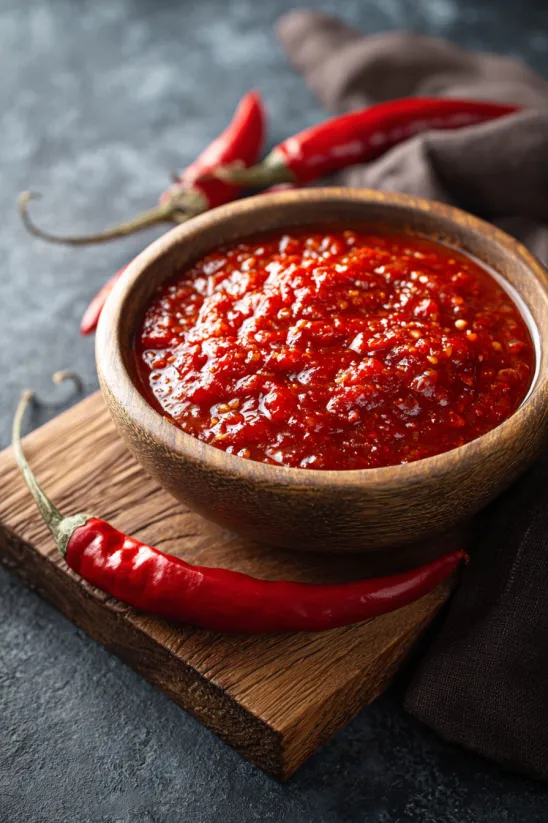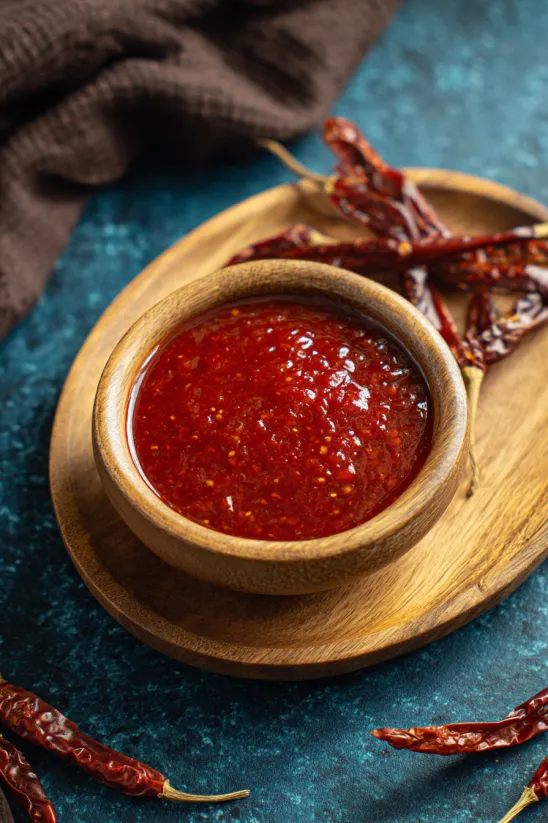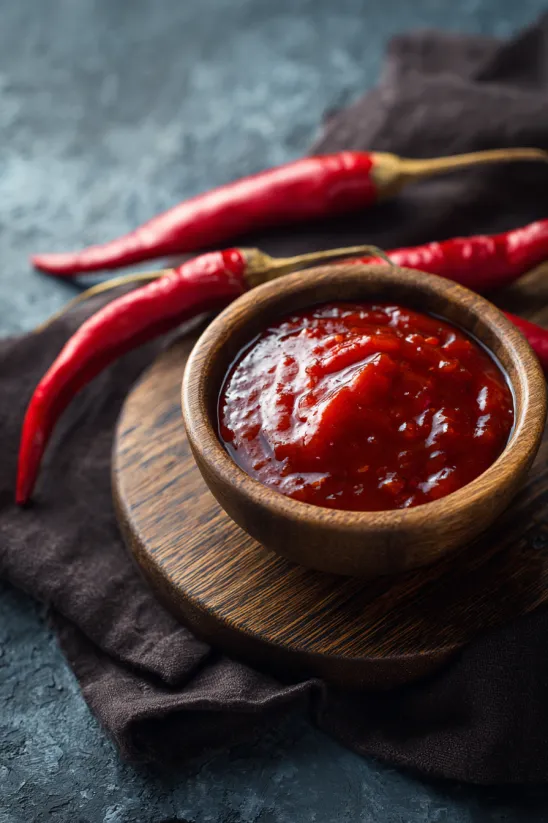 Bookmark
Bookmark
Harissa is a versatile North African chili paste with big flavor. Learn how to make bold, spicy homemade harissa with roasted peppers, hot chilies, and vibrant spices, perfect for stews, sauces, marinades, and so much more. This is my tried and true recipe I've been using for years. Includes a video below.
What is Harissa?
Harissa is a bold, flavor-packed chili paste that originated in Tunisia and quickly spread across North Africa, spicing up kitchens in Morocco, Libya, and Algeria. Traditionally made with dried chilies, garlic, olive oil, and a vibrant mix of spices like cumin, coriander, and caraway, it’s a staple that brings serious attitude to the table.
While it’s known for its fiery kick, harissa’s heat can range from warm and smoky to full-on flame, depending on the chilies and regional spin. But no matter the heat level, it always delivers big, complex flavor.
In North African cuisine, harissa isn’t just a condiment, it’s a cornerstone. In Tunisia, it’s part of daily life, stirred into soups, couscous, stews, or simply smeared on bread with olive oil.
Across the region, it’s used to elevate grilled meats, marinades, and sauces. Harissa reflects the North African love of layered, aromatic, spice-driven cooking - bold, balanced, and never boring. It’s the kind of ingredient that transforms everyday meals into something unforgettable.
And around here? You know we like it spicy.
What Does Harissa Taste Like?
Harissa has an earthy flavor that’s rich, spicy, and deeply aromatic. The exact taste can vary depending on the peppers and spices used. Milder chilies create a more approachable, smoky warmth, while hotter varieties bring serious heat.
Some versions use smoked peppers for added depth, while others go with fresh or sun-dried chilies for a brighter bite. Spices like smoked paprika, cinnamon, and clove can add sweetness, warmth, or complexity depending on the blend.
The flavor also shifts across regions. Tunisian harissa tends to be bold and hot, while Moroccan versions may be more fragrant and spiced. No matter the style, it’s a concentrated paste with big personality. A little goes a long way, so start small and build up to your heat tolerance.
What Peppers are Used to Make Harissa Paste?
Commonly used peppers are roasted red bell peppers, serrano peppers, and Baklouti peppers, though a popular version is to use dried chili peppers (chiles de arbol, ancho peppers, guajillo peppers, pasilla peppers), which I use for my recipe.
You can use any dried or fresh peppers to make harissa.
Harissa Paste Ingredients
- Dried Chilies: I'm using guajillo, ancho, pasilla, and chile de arbol for a bit of extra heat. You can use other dried chilies.
- Tomato Paste: Optional, but a tasty addition.
- Roasted Red Peppers: Red bell peppers are ideal. Optional, but I love the smoky addition.
- Seasonings: Caraway, coriander and cumin seeds, salt.
- Oil: Use the best extra virgin olive oil.
- Fresh Garlic: For pungent flavor.
- Lemon Juice: For acidity and help preserving.
How to Make Harissa Paste
- Step 1:
- Place stemmed and seeded dried peppers in a bowl, cover with boiling water, and let soak 20–30 minutes until softened. Transfer to a food processor.
- Step 2:
- Toast caraway, coriander, and cumin seeds in a dry pan until fragrant, 2–3 minutes. Cool, grind, and add to the food processor.
- Step 3:
- Add in your olive oil, garlic, salt and lemon juice, and process to form a paste. Strain for a smoother harissa.
 Bookmark
Bookmark
Recipe Tips & Notes
- Toast the dried peppers. I like to dry toast dried peppers in a hot skillet before rehydrating to release their oils. It adds deeper flavor, though it’s optional.
- Variations to try. Harissa recipes vary by region and taste. This version is common, but tweak it to your liking. Try other roasted peppers, fresh tomatoes, or sun-dried in oil. You can also add ingredients to make a sauce, like my Harissa Sauce Recipe.
Uses for Harissa
I love swirling it into soups, stews, salad dressings, to season fish or rub into chicken, or enhance roasted vegetables. You can also turn it into a wonderful sauce or marinade. It's great for hot sauces.
It adds a nice complexity to your meals, and when you have your own homemade harissa paste on hand ready to go, it will save you a lot of time in the kitchen.
 Bookmark
Bookmark
Storage
Store in a jar with a little oil over the top. Seal or cover with plastic wrap. Use as needed. It should stay fresh in the fridge for up to 2 weeks.
You can also freeze harissa for 3 months or longer in freezer containers.
Frequently Asked Questions
- → What does harissa taste like?
Harissa has a rich, spicy, and aromatic flavor. Depending on the peppers used, it can be smoky, earthy, or fiery with a balance of warm spices like cumin and coriander.
- → What kind of peppers are used in harissa?
Common peppers include guajillo, ancho, pasilla, and chile de arbol. Roasted red bell peppers are often added for sweetness and depth.
- → Can I adjust the heat level of harissa?
Yes, you can use milder or hotter chilies depending on your spice preference. You can also remove the seeds from the chilies to reduce heat.
- → How do I store homemade harissa?
Store it in a sealed jar with a layer of olive oil on top in the fridge. It lasts up to 2 weeks. For longer storage, freeze in portions.
- → How can I use harissa in cooking?
Stir it into soups, stews, or dressings, use it as a marinade for meats, or mix into sauces. It adds depth and spice to many dishes.
- → Is it necessary to toast the spices and chilies?
Toasting enhances the flavor by releasing essential oils. While optional, it’s recommended for a deeper, more aromatic paste.
